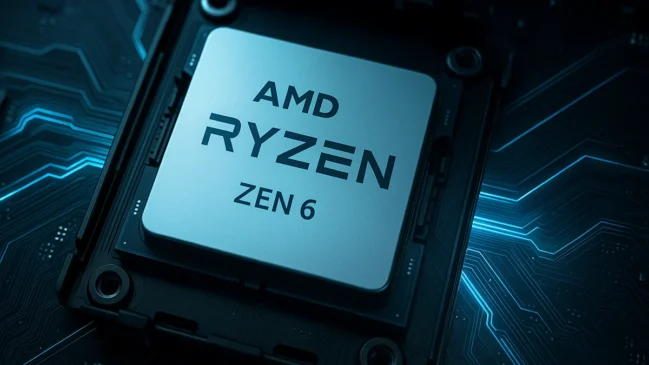
The action roguelike scene is flooded these days. To make waves, a game needs killer combat, upgrades that actually matter, and a story that claws at you to keep playing. Yasha: Legends of the Demon Blade throws its hat in the ring with a slick premise: you pick from three wildly different warriors—each with their own flashy weapons and fighting styles—to slash through hordes of demons in fast-paced, anime-inspired chaos. At first blush, it’s easy to get hooked. The art pops with vibrant colors, the combat feels buttery-smooth, and mixing melee combos with ranged attacks keeps things spicy early on. Throw in weapon upgrades and separate character campaigns, and it seems primed to sink its claws into that “just one more run” addiction.
But here’s the rub: roguelikes live or die by freshness. Yasha starts strong but quickly trips over repetitive level designs, enemies that feel like copy-pasted obstacles, and a story that’s basically “anime tropes: the game.” They try to sandwich narrative between runs with dramatic cutscenes, but the characters are about as deep as a puddle, and the dialogue does nothing to make you care about the stakes. After a few runs, you’re left wondering why you’re grinding through the same corridors again—just to unlock another sword swing you’ll barely notice?
This review isn’t just about whether Yasha’s combat feels good (it does!) or if the art slaps (it totally does!). It’s about whether all those pieces add up to something memorable… or if it’s just another forgettable demon-slaying treadmill. Because in a genre where games like Hades and Dead Cells set the bar sky-high, “pretty good” doesn’t cut it anymore.
Story
The narrative of Yasha: Legends of the Demon Blade is built around a classic quest framework, where players embark on journeys to confront the nefarious Fox Demon spreading chaos throughout a mystical land. The story is told through three separate campaigns, each following a different protagonist — Shigure, Sara, and Taketora. Each character’s tale is a retelling of the central conflict from unique perspectives, with shifting roles for supporting characters. This theatrical approach, where familiar faces take on different parts in each campaign, is an intriguing concept that hints at depth and complexity.
However, despite this potentially rich storytelling structure, the actual execution leaves much to be desired. The three campaigns largely rely on well-worn fantasy tropes, such as the “chosen one” with a mysterious past and the honorable soldier facing overwhelming odds. While these archetypes can serve as a solid foundation, Yasha’s writing often feels superficial and uninspired. Attempts at injecting drama or humor into the story frequently fall flat, resulting in dialogue that feels more tedious than compelling.

The game’s method of story delivery — brief conversations between dungeon runs — also struggles to engage players. These moments lack emotional weight or memorable character development, which means that the narrative fails to motivate players to push through the repetitive levels. Even the village hub, meant to be a lively center where players can interact with townsfolk and get immersed in the world, is surprisingly empty of meaningful content or intriguing NPCs.
Ultimately, while Yasha attempts to tell a layered tale of heroism and demon-slaying through multiple viewpoints, it never quite rises above a forgettable backdrop that serves mainly as a thin veneer over the gameplay. The story’s failure to create genuine emotional investment leaves it feeling like a missed opportunity, especially for a genre where strong narrative hooks can greatly enhance replayability.
Gameplay
At its core, Yasha: Legends of the Demon Blade delivers a straightforward action roguelike experience that blends hack-and-slash combat with procedurally structured dungeon runs. Players dive into a repetitive cycle of exploring three distinct regions — a crab-infested beach, a demon-haunted forest, and a frozen castle teeming with enemy soldiers — each filled with waves of enemies, loot, and boss battles.
Combat is where the game shines, albeit in a basic but satisfying way. Each of the three playable characters offers a different combat style, which adds some variety to the otherwise repetitive encounters. Shigure wields a katana that balances offense and defense, relying on a mix of light and heavy attacks, plus parries and counters. Sara’s dual blades encourage aggressive play, with empowered dash attacks that allow her to overwhelm foes quickly. Meanwhile, Taketora’s bow and arrow let players adopt a patient, ranged approach, supplemented by melee strikes to keep enemies at bay.
The responsiveness of attacks, dashes, and parries is crisp, making combat feel tight and engaging. Successful parries can be turned into powerful counterattacks, rewarding players who master timing and positioning. Weapon variety is also notable, with around seven unique options per character, each offering different effects such as fire damage or attack buffs that stack as you use certain moves. This encourages some experimentation, though the impact is diminished because most enemies can be defeated with a straightforward approach.

Procedurally generated level layouts and enemy spawns provide some unpredictability, but the degree of variation is limited. The majority of the rooms, enemy types, and encounters repeat frequently, which contributes to a sense of monotony over time. While the environments are visually appealing, only the last area features interactive elements like destructible walls and traps, adding a bit more tactical consideration to combat.
Yasha also incorporates a light progression system, where players collect soul orbs and purchase amulets that enhance their stats or weapon abilities. These upgrades provide a modest layer of strategy as you try to build synergistic effects, but the lack of significant enemy challenge reduces the incentive to deeply engage with this system. Similarly, a meta-progression mechanic allows you to spend currency after runs to improve passive abilities or weapon power, gradually making your character stronger and encouraging repeated playthroughs.
However, beyond the initial few hours, the gameplay loop can start to feel stale. The lack of meaningful enemy variety, predictable stage design, and low difficulty on standard modes limit the excitement of repeated runs. Only the later bosses present a real challenge, but their inflated health pools make fights drag on rather than feel thrilling.
Visuals, and Audio
Visually, Yasha: Legends of the Demon Blade stands out with a richly illustrated art style that pays homage to classic Japanese ukiyo-e prints. The game’s hand-drawn backgrounds and character animations exude a painterly elegance, combining soft brushstrokes with bold outlines that give the world a storybook quality. Each region is thematically distinct — from the dusky, wave-swept beaches to the moonlit sakura forest and the frozen ruins of the final castle — all bathed in a vibrant color palette that reinforces the game’s mythological tone.
The attention to detail in animations is particularly notable. Enemies explode into inky splatters when defeated, and player characters move with smooth, deliberate grace that complements the reactive nature of combat. Special attacks, critical hits, and parries are accompanied by stylish visual flourishes like slashing arcs and glowing bursts, which add flair without overwhelming the screen.

Despite the visual appeal, there is a drawback: the environmental variety is thin. Each area, while initially stunning, lacks the dynamism or interactivity needed to remain visually engaging across multiple runs. You’ll see the same backgrounds, room layouts, and visual cues repeat frequently, which can dull the aesthetic impact over time. Only in the final stages — with destructible terrain and more verticality — does the level design feel more alive and reactive.
On the audio front, Yasha delivers a more understated experience. The soundtrack, while appropriate for the setting, tends to blend into the background. Traditional Japanese instruments like the shamisen and shakuhachi provide a calm, folkloric ambiance during exploration, shifting to tense drum-heavy themes during combat. However, none of the tracks stand out as particularly memorable, and after extended play sessions, the music can start to feel repetitive.
Sound effects are effective and well-integrated, especially in combat. Sword slashes, parries, and explosive attacks have a clean, satisfying punch to them. Enemy groans and death effects are suitably grotesque without being overbearing, and menu navigation sounds are sharp and responsive. Voice work is limited, mostly reserved for short combat barks or boss introductions, and while they add a bit of flair, they don’t contribute significantly to the overall atmosphere.
Final Thoughts
Summary
Yasha: Legends of the Demon Blade is a visually arresting, mechanically refined roguelike that blends Japanese folklore, fast-paced combat, and stylish presentation into an experience that feels both familiar and fresh. It excels at delivering moment-to-moment action that's fluid and rewarding, driven by smart enemy design, impactful swordplay, and a robust upgrade system that encourages experimentation. However, the game falls short in several key areas that keep it from reaching true greatness. The lack of environmental and enemy variety becomes noticeable early on, and while the story has compelling characters and a unique cultural setting, its delivery is often too subtle or fragmented to leave a lasting impression. Additionally, progression systems outside of combat can feel sluggish, making early runs feel grindy rather than gratifying. Still, Yasha's strengths outshine its flaws. It manages to carve out a distinct identity in a crowded genre by staying true to its artistic vision and mechanical tightness. For fans of Dead Cells, Hades, or Katana Zero, there's plenty here to enjoy just don't expect it to reinvent the wheel.






